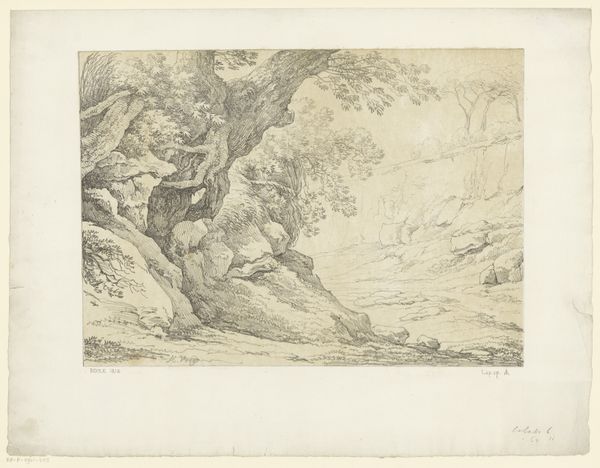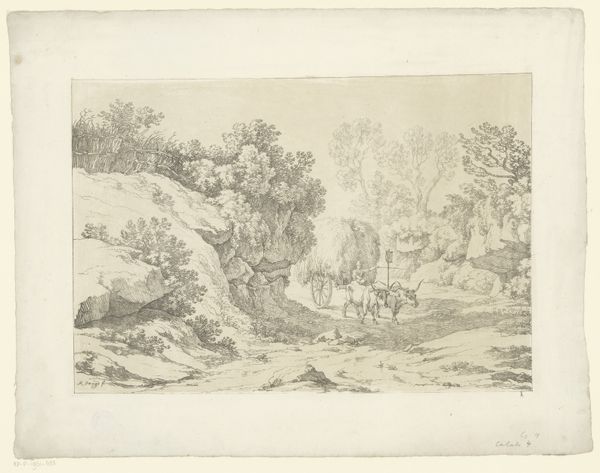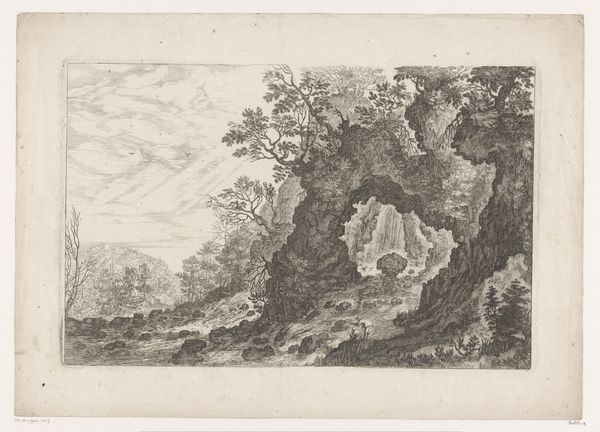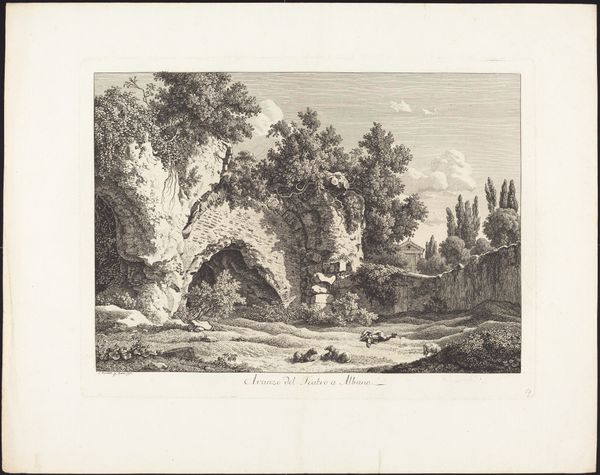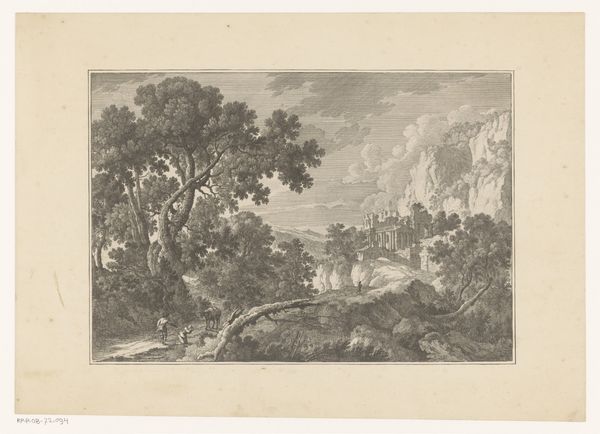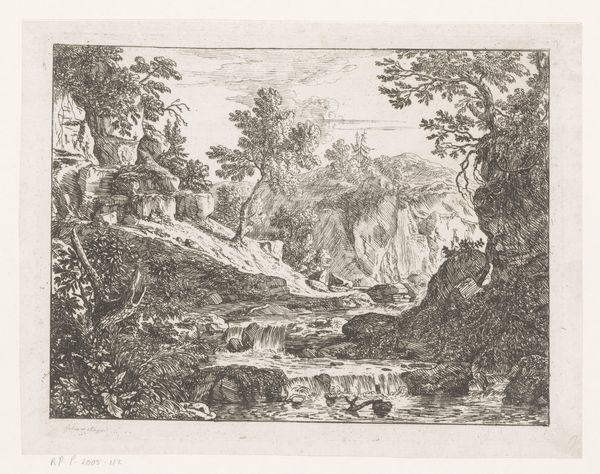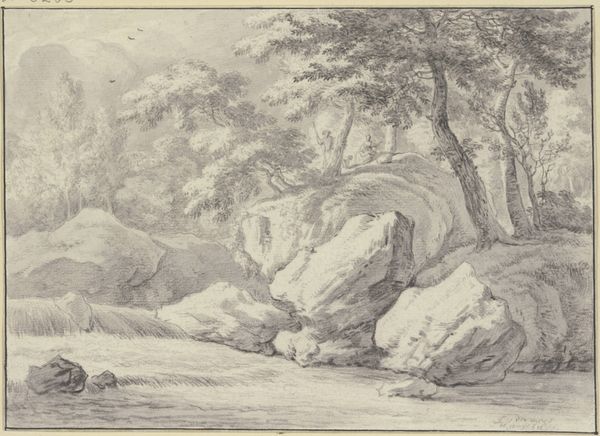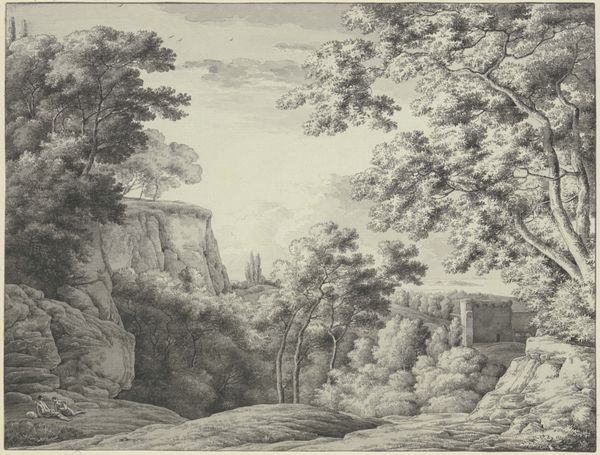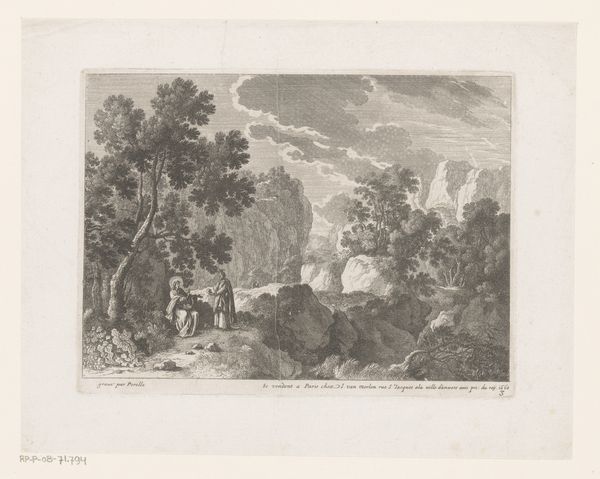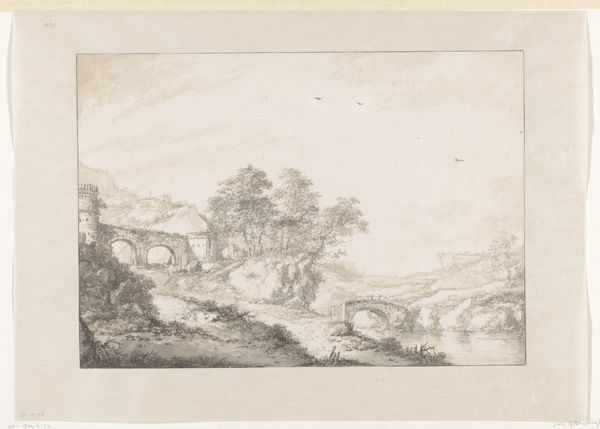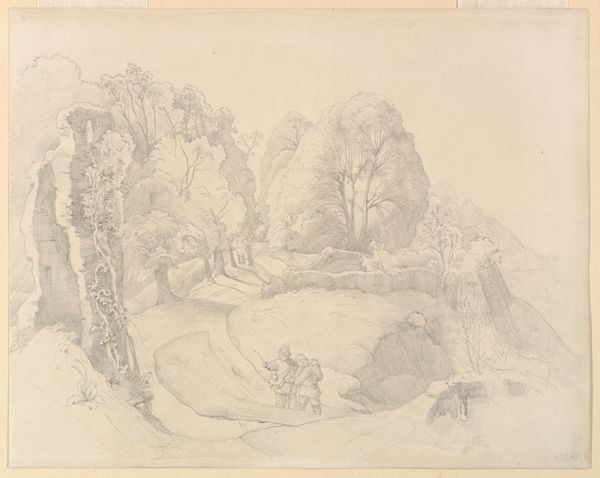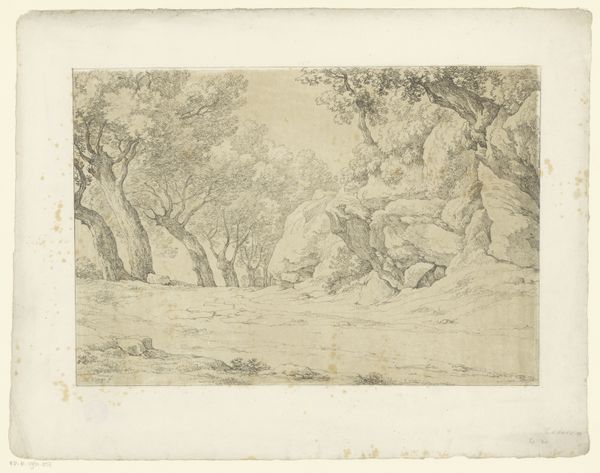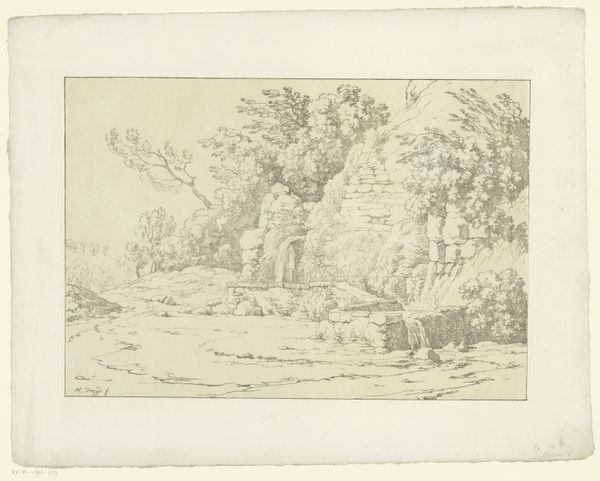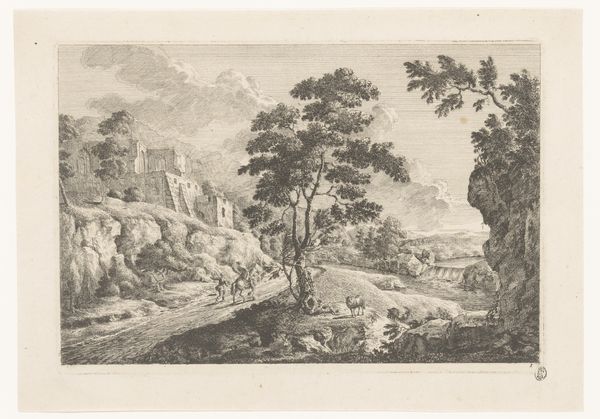
drawing, pencil
#
drawing
#
pencil sketch
#
landscape
#
form
#
romanticism
#
pencil
#
realism
Dimensions: height 387 mm, width 499 mm
Copyright: Rijks Museum: Open Domain
Curator: This pencil drawing, “Rocks with Bushes,” was created around 1820 by Hendrik Voogd. At first glance, it is a detailed study of rock formations, revealing the artist's careful observation. Editor: It strikes me as austere, almost bleak. The starkness of the rock, rendered so meticulously, gives off a sense of nature's indifference. There's no human presence, no story. It feels... isolated. Curator: That isolation, I believe, is key to understanding its cultural moment. The Romantic era artists were turning away from depictions of society to reveal sublime truths about raw nature. The rocky setting has a symbolic resonance with classical ideals, alluding perhaps to notions of perseverance or timelessness. Editor: Perhaps. But isn’t that sublimation of the personal, that retreat into "untouched" nature, often a privilege? Who gets to define 'untouched,' and whose perspectives are silenced in that definition? I see these "objective" landscapes as bearing a heavy social encoding. Curator: Interesting point. The artist did intend to present a realistic interpretation of form, certainly in keeping with the values of realism emerging within the romanticism style. It would invite the viewer into meditative consideration. Editor: I read the darkness of those rock crevices differently, like nature swallowing narratives rather than celebrating them. The lack of vibrant color and life almost feels oppressive, evoking a sense of restriction, particularly the rigid frame around the entire piece that creates this distinct foreground/background tension. How might Voogd's work, and its legacy, have suppressed the realities of marginalized groups? Curator: It's an intriguing lens through which to view Voogd's piece; it challenges traditional interpretations by weaving social concerns into art history. Editor: Exactly, prompting us to engage not only with Voogd's skill, but the larger socio-political structures that dictated what and who were deemed worthy of representation, whose views remain unseen in these "objective" studies. Thank you for guiding me on a journey of form and emotion. Curator: And thank you for encouraging me to see past aesthetic beauty to a more inclusive representation.
Comments
No comments
Be the first to comment and join the conversation on the ultimate creative platform.
